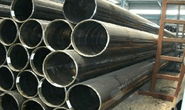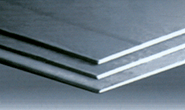Steel Products Prices North America

Energy Demand Doesn't Justify Soaring HRC Prices: Minnich
Written by Michael Cowden
June 10, 2021
The energy tubulars market is still waiting for the boom flat-rolled steel prices – the sector’s primary input cost – to flow through to pipe selling prices, according to one industry expert.
On the face of it, things look good. Oil prices are improving, the rig count is up dramatically versus a year ago, and the International Energy Agency has pulled forward its forecasts for oil demand recovering to pre-pandemic levels to early 2022 – a big improvement from prior forecasts of 2023 at best, said Kurt Minnich, president of oilfield tubular market research firm Pipe Logix.
![]() “Sentiment right now is surging, and of course you see the price accelerating with that. We are in an economic recovery that is unheard of. We call it a snapback,” Minnich said.
“Sentiment right now is surging, and of course you see the price accelerating with that. We are in an economic recovery that is unheard of. We call it a snapback,” Minnich said.
“But the oilfield activity is not responding at that pace,” he said. “Activity is much slower in terms of wells coming back on and certainly in terms of line pipe construction activity.”
Minnich made the comments during a presentation at the National Association of Steel Pipe Distributors (NASPD) summer conference in Denver.
The price and the indicators
Steel Market Update’s hot-rolled coil prices reflect that “snapback”. SMU’s benchmark hot-rolled coil price stands at $1,675 per ton ($83.75 per cwt), up 70.1% from $985 per ton at the beginning of the year and more than triple $515 per ton a year ago.
SMU’s sentiment index, meanwhile is at 79, up 29.5% from 61 at the beginning of the year and more than double 32 a year ago.
The U.S. rig count – a leading indicator of demand for energy products such as oil country tubular goods (OCTG) – is also up sharply. It stood at 456 rigs when this article was filed, up 172 rigs from 284 a year earlier, according to data from oilfield services firm Baker Hughes.
Those gains come as oil prices were at approximately $70 per barrel on Thursday afternoon.
“Less than a month ago, we have been really happy to get anywhere near $60 (per barrel) oil. Now everyone is raising their forecasts,” Minnich said. “So those factors tell us, yes, demand is coming.”
Despite such bullish signals, there remain many “disconnects” in the steel and energy markets, he said.
While the rig count is up sharply from a year ago, it remains below the 500-rig threshold that is typically indicative of increased oil production – and well below the 1,000-2,000 rigs that have been running during previous strong markets. And the recovery has been mostly concentrated in the oil-rich Permian basin in Texas. Natural gas activity – think shale plays such as the Marcellus and the Haynesville – continues to lag, Minnich said.
Part of the reason for the lower rig count is that wells are deeper and more complex now, meaning that each rig contains far more OCTG than was the case in a prior boom market like 2008. But there are also concerns that, while demand has improved since the pandemic, that it might not get back to pre-pandemic levels.
Where the rubber meets the road
Case in point: Miles driven, an advance indicator of oil demand, might not recover to pre-pandemic levels. That’s because while 25% of workers are expected to come back to the office, approximately 45% are working in a hybrid situation, and another 30% might work from home permanently. “The shock sent everyone home. The recovery is not going to bring everyone back,” Minnich said.
And while OCTG demand should improve along with the rig count, the same is not true of the line pipe sector, which is expected to see demand decline this year. That sector started out strong in early 2021 but has since been marred by the cancellation of several large-diameter projects – think pipelines over 24 inches in diameter, he said.
“The surge we’re seeing in pricing, is definitely a cost driven surge,” he said. “And we’re waiting to see if it is supported by the demand. And that will be key.”
It’s possible that hot-rolled coil prices have gotten too far ahead of themselves. “It’s hard to imagine that you are going to pay more for your coil than you are going to get for your pipe. And right now things to be a little upside,” Minnich said.
He predicted that there would be “a great reconciliation” when it came to prices. Although the timing of when that might occur is hard to know.
“We’re good through the end of the year in terms of holding pricing. We think we’ll be into 2022 before we start seeing some real hits on the consumption side,” Minnich said.
Why might the backlash to higher steel prices not be happening yet? Oil and gas companies don’t raise a red flag as long as OCTG prices don’t account for more than 10-20% of a well’s cost. And to date, that doesn’t seem to be the case.
“But once it kicks through that 20% of the well cost, then they are going to start hammering on the distributors that are providing the OCTG and saying ‘We want something different.’ And that’s where it all meets the fan,” he said.
Michael Cowden, Michael@SteelMarketUpdate.com

Michael Cowden
Read more from Michael CowdenLatest in Steel Products Prices North America

SMU Price Ranges: Sheet floor holds as market debates upside
Our average HR coil price increased $5/short ton from last week, marking a second consecutive week of modest gains. Market participants generally attributed the increase to...

Thin demand keeps plate prices hovering at lowest levels since February
Participants in the domestic plate market say spot prices appear to have hit the floor, and they continue to linger there. They say demand for steel remains thin, with plate products no exception.

SMU Price Ranges: HR crawls back to $800/ton
SMU’s HR price stands at $800/st on average, up $5/st from last week. The modest gain came as the low end of our range firmed, and despite the high end of our range declining slightly.

SMU successfully completes IOSCO review
SMU has successfully completed an external review of all our prices. The review has concluded that they algin with principles set by the International Organization of Securities Commissions (IOSCO).

Domestic plate prices could heat up despite so-so demand, market sources say
Some sources also speculated that plate could see further price increases thanks to modest but steady demand, lower imports, mill maintenance outages, and end markets less immediately affected by tariff-related disruptions.
